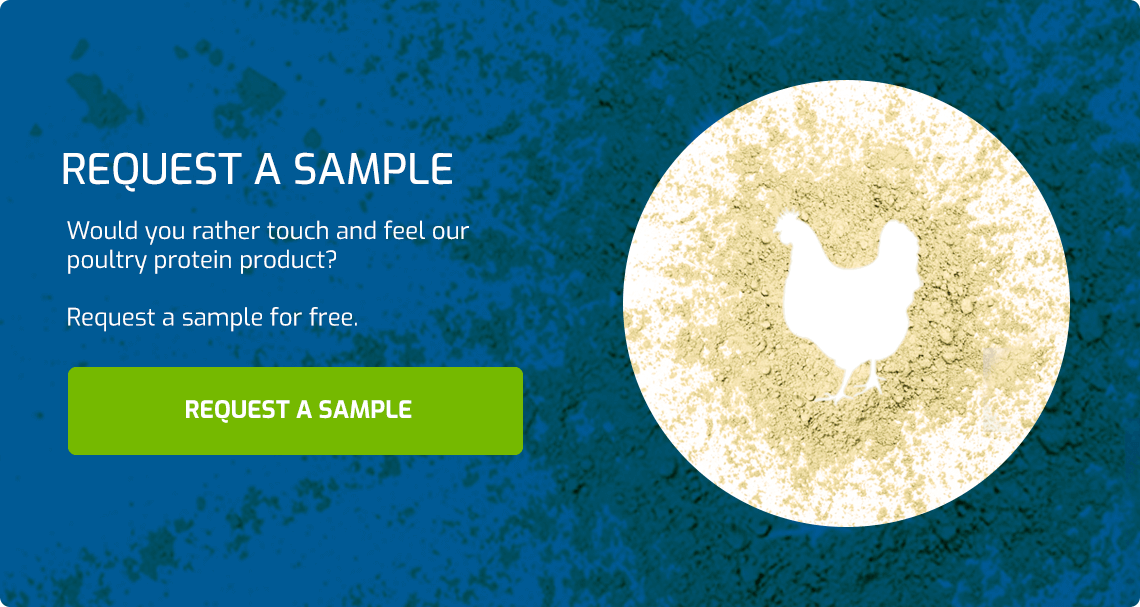- +31(0)499-364-820
- News & Blogs
-
EnglishEN
-
Why is soya a common additive in chicken and turkey products? We explain why and how soya is used in poultry products, and also offer up a superior additive to use instead of soya.
Soy protein is a go-to additive for poultry products for a few reasons. Here, we outline why and how soy protein is used. There are some significant cons to using soy, however, and so in addition to covering those drawbacks of soy, we offer up a superior solution. Using Sonac’s functional poultry protein will yield a higher quality, healthier, and more cost effective end product for you and your consumers.
Why meat processors tend to use soy in chicken and turkey meat products
Soy (and its derivatives soy protein, soy protein concentrate, and soy protein isolate) is a common binder and emulsifier: it helps hold poultry meat dough together and keep it firm. This decreases potential waste during product production and also maintains product shape for items like burger patties and meatballs.
Soy is also popular because it’s widely available and is affordable. Soy is a commodity crop with many suppliers across all global markets.
Third, soy is easy to use. Producers can combine soy with almost any ingredient or product and it doesn’t require a lot of instructions to use. Soy protein is also easy to use because it is heat stable, so it maintains its texture when the poultry product is cooked.

The cons of using soy in chicken and turkey meat products
Despite these benefits to choosing soya, there are also drawbacks to soy protein, which results in the search for an alternative. A few of the biggest disadvantages are:.
For consumers outside of Asia, there’s an expectation that poultry products will deliver a meaty flavor. The beany flavor of soy is unique and also hard to mask. Most Western consumers do not gravitate towards the flavor of soy.
Another drawback is texture: while soy can help keep a poultry product firm, soy lacks that meaty or fibrous texture that’s expected in a poultry product. Consumers want to bite into a chicken or turkey product and need to chew that bite a few times. Adding soy protein tends to yield a gummier texture. In other words, use soy protein in a chicken or turkey product and typically you only need to chew a bite once.
The third disadvantage of soy is that it’s one of the 8 most common allergens. Including an allergen in your end product presents two problems: one, the product packaging must contain allergen labeling; and two, there are production hurdles to work around so as to not cross-contaminate other products made in the same facility.
Poultry protein: a great substitute for soy protein
Although soy protein serves as a binder and emulsifier in your poultry product, there is an option that can yield a higher-quality end product: Sonac’s functional chicken protein (QBindChicken FPP C) or functional turkey protein (QBind Turkey FPP T). FPP C and FPP T are also more nutritious than soy protein and can help food manufacturers lower the formulation cost. (In this blog you can read all the reasons to use this poultry protein.)
Functional poultry protein is superior to soy in that it delivers ample amounts of all of the essential amino acids that the human body needs and can’t make by itself. Another reason to consider replacing soy in your poultry product (and as you can see in the disadvantages of soy) is that soy is an allergen. Unlike soy, FPP C and FPP T are natural products and not common allergens. Using FPP C and FPP T also help you clean up your end product ingredient label (read more about why and how poultry protein yields a cleaner label here). Lastly, the composition of chicken and turkey protein makes the final product juicier than if soy was used. The juiciness comes from the collagen (there’s about 40% collagen in both poultry proteins), which melts when it’s heated giving the end product a meaty, juicy texture. The collagen also aids in binding and holding water in the poultry product, and this keeps the end product juicy, too.
You can read more about replacing soya with functional poultry protein here.
Are you considering substituting soy in your poultry product?
Read more about Functional Poultry Protein-Chicken (FPP C) here, and Functional Poultry Protein-Turkey (FPP T) here. Or download our leaflets (on the right side of this page).
Would you like to request a sample and test these proteins? You can fill out a request here and a product specialist from Sonac will arrange for a sample to be sent.
